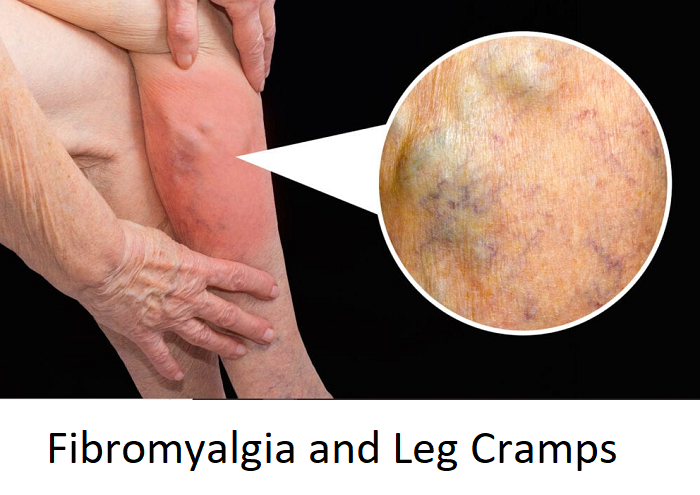Fibromyalgia and Leg Cramps
Fibromyalgia, a chronic condition characterized by widespread pain and fatigue, a chronic illness marked by pervasive pain and exhaustion. Imagine finally falling asleep in the middle of the night, only to awaken in excruciating pain as your foot or leg cramps so badly that your toes bend in strange ways. Some people find that the discomfort is almost unbearable, mimicking the rise and fall of labour contractions. If this seems similar, it’s critical to comprehend the reasons and look into workable solutions.
This article explores useful remedies for leg cramps caused by fibromyalgia, including magnesium supplements, cutting-edge tools like TENS machines, and even complementary therapies like yoga and acupressure.
Causes Of Leg Cramps in Fibromyalgia?
Fibromyalgia-related muscle cramps are frequently associated with magnesium deficiency, impaired blood flow, and increased nerve sensitivity. These elements play a part in the severe pain and discomfort that interfere with everyday activities and sleep. Leg cramps can be less severe and occur less frequently if these underlying problems are addressed.
1. Magnesium: A Natural Ally Against Leg Cramps
Magnesium shortage is known to contribute to muscle cramping and is prevalent in fibromyalgia sufferers. The effects of topically applied magnesium on fibromyalgia symptoms were investigated in a Mayo Clinic study that was published in the Journal of Integrative Medicine. After just two weeks, patients who used a product called “Fibro Flex” for four weeks had a discernible reduction in their muscle cramps.
Principal Advantages of Magnesium
- lessens tension and cramping in the muscles.
- enhances the management of pain in general.
- reduces symptoms such as sore spots and exhaustion.
How to Get Relief with Magnesium:
- Topical Application: Directly apply magnesium lotions or sprays to the afflicted areas.
- Dietary Sources: Include foods high in magnesium, such as avocados, spinach, and almonds.
- Supplements: For information on suitable magnesium supplements, speak with a healthcare professional.
2. Pain Management TENS Machines and EMS Equipment
Devices for electrical muscle stimulation (EMS) and transcutaneous electrical nerve stimulation (TENS) are non-invasive methods of treating fibromyalgia pain.
The Operation of TENS Machines:
- prevents pain signals from getting to the brain by sending electrical pulses via the skin.
- encourages the body’s natural painkillers, endorphins, to be released.
How EMS Devices Differ:
- EMS equipment stimulates muscles to increase range of motion and blood flow.
- They can be very useful for improving muscle relaxation and lowering stiffness.
These devices provide a safe and drug-free option to pain management and are compact, portable, and available for use at home.
3. Other Techniques to Reduce Leg Cramps
Yoga for Blood Flow and Flexibility
Mild yoga stretches can reduce the chance of cramps by maintaining muscle flexibility and enhancing circulation. Patients with fibromyalgia frequently discover that yoga increases mobility and lessens general pain. Important pointers include:
- Begin with positions that are easy for beginners.
- Don’t overdo it and pay attention to your body’s limitations.
Bowen therapy combined with acupressure
- Acupressure: By applying pressure to particular areas, you can increase circulation and reduce stress.
- Even for animals like horses, Bowen Therapy is a gentle method that uses rolling motions to encourage healing and pain alleviation.
Vitamin E
Muscle cramps are said to be lessened by vitamin E, particularly in those who lead sedentary lives. It reduces oxidative stress in muscles and increases blood flow.
Options for Pharmaceuticals: Lyrica
One of the most popular drugs for fibromyalgia, lyrica, has demonstrated efficacy in reducing cramping in the muscles. It targets nerve pain and lessens the brain’s pain circuits’ sensitivity.
Lifestyle Advice for Leg Cramps Associated with Fibromyalgia
- Drink plenty of water. Make sure you’re getting enough water because dehydration can make cramping in your muscles worse.
- Warm Baths: Before going to bed, take a warm bath to help relax your muscles and lessen cramping.
- Frequent Exercise: To keep your muscles healthy, take part in low-impact exercises like walking or swimming.
- Proper Sleep Hygiene: To enhance the quality of your sleep and lessen cramping, set up a nighttime regimen.
Share Your Experiences
Have you tried any of these remedies for fibromyalgia-related leg cramps? Whether it’s magnesium supplements, TENS machines, or alternative therapies like yoga, your insights can help others navigate this challenging condition.
Comment below with your tips, successes, and lessons learned. Together, we can build a supportive community and share effective strategies for managing fibromyalgia and its symptoms.
By combining medical treatments, natural remedies, and lifestyle changes, fibromyalgia patients can find relief from debilitating leg cramps. Take proactive steps to explore these options and improve your quality of life.
Sourse: https://chronicpainfighter.com/fibromyalgia-and-leg-cramps/



